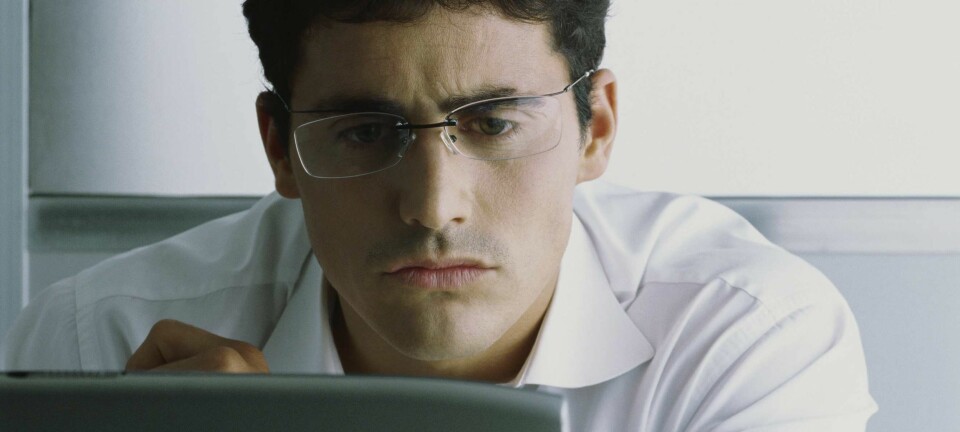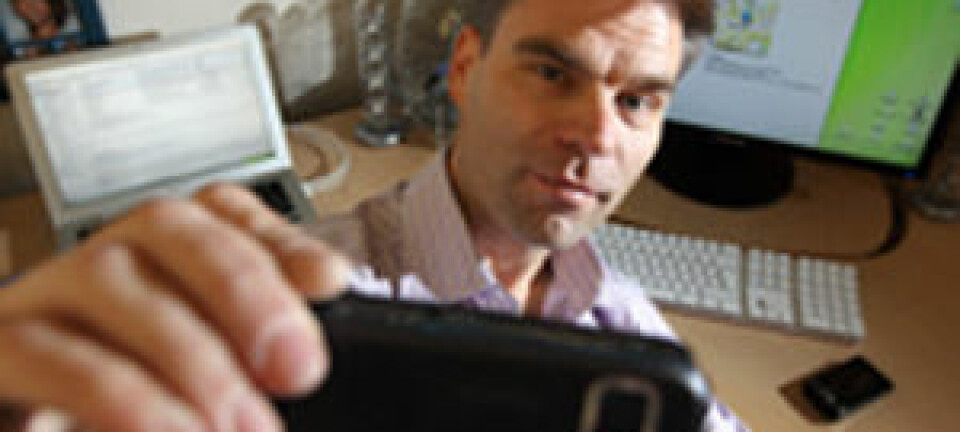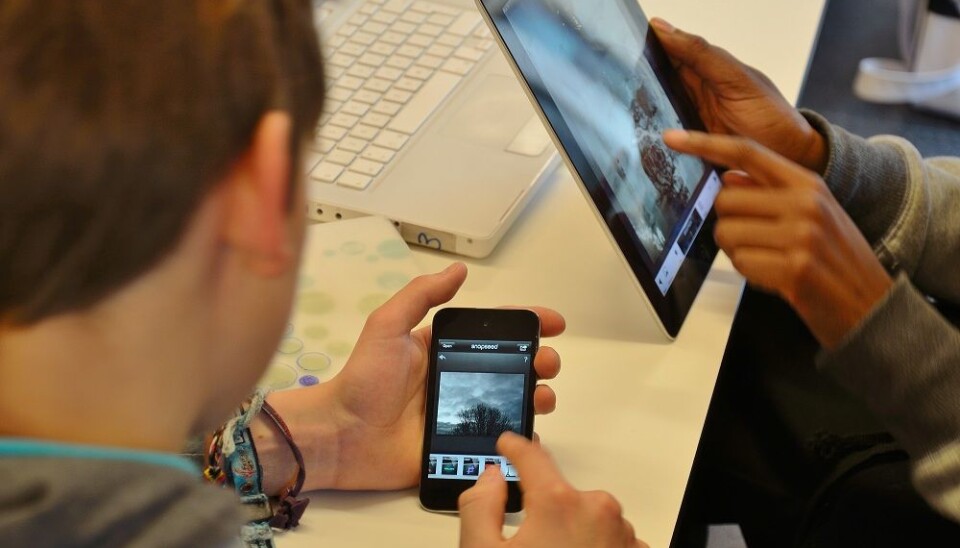
Apps for science geeks
Apps can teach us about anything from the cells in our bodies to the most distant stars in our universe. ScienceNordic has asked three researchers to name some of their favourite science apps.
The world’s best-selling app is a game which consists of throwing angry birds at green pigs. But apps are more than just fun and games. Some of these little programs for smartphones and tablets can actually feed us with a great deal of scientific knowledge.
Many of the knowledge-based apps are aimed at schoolchildren and university students. These can be used for handling simple tasks such as reading textbooks, translating or finding formulas.
Dissecting digital animals
But the number of interactive science apps that make active use of the touchscreen is also on a steep increase. With these apps at their fingertips, budding chemists can build and manipulate 3D molecules, biologists can dissect virtual frogs and anatomy apps make it easy for medical students and doctors to travel inside the human body.
Docs love apps
Doctors, in particular, have a great variety of apps to choose from. They were also one of the first groups of professionals that started using apps as part of their work, says Professor Martin Brynskov, a researcher in interactive technologies at the Department of Information and Media Studies at Aarhus University.
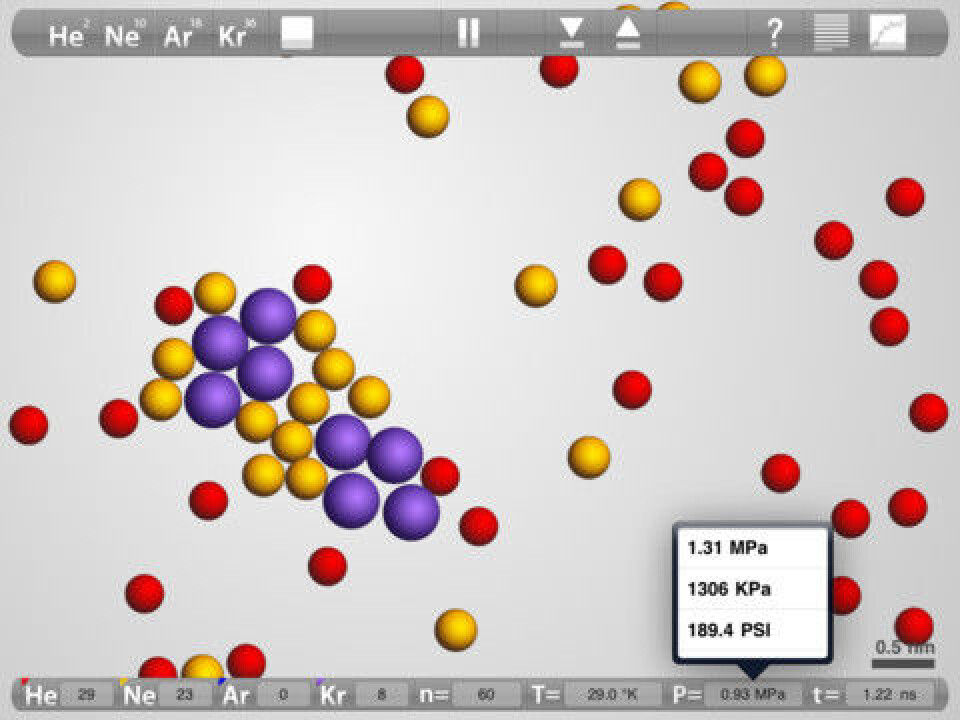
“Doctors were quick to realise that instead of dragging 17 books around on the ward, they could put all the information on their phones. This is one of the reasons why mobile technology has a great future in hospitals.” says Brynskov.
One of the keenest app users in the Danish healthcare system is orthopedic surgeon Ulrik Kähler Olesen, who works at the Copenhagen University Hospital. In addition to running two Danish healthcare websites, which are also available in as apps, he uses several international apps in his daily work.
He is particularly fond of the 3D anatomy app Visible Body. With the stroke of a finger, the surgeon can peel off the skin and view detailed images of the body’s internal structures, layer by layer all the way down to the bone.
Olesen finds the 3D visualisation useful in his teaching, and he frequently uses the app in preparation for operations.
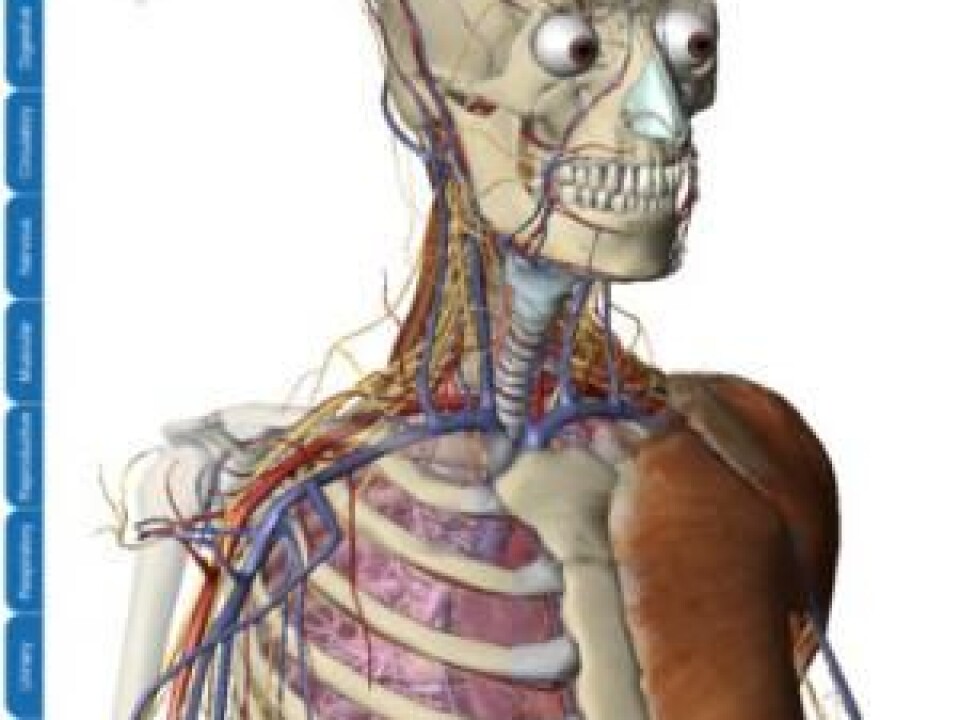
”There are blood vessels, nerves and tendons between the skin and the bones, so it’s good to know in advance where to cut and where not to cut,” he explains.
“It’s like reading a map before you go for a walk in the woods, so you have some expectation of what you’ll encounter when you get there.”
App made researcher ditch paper
The mobile and convenience benefits of using apps, as compared to regular computers, dawned on Professor Jan Halborg Jensen the minute he got hold of an iPad.
As part of his research at the Department of Chemistry at the University of Copenhagen, he reads many long scientific articles. Since discovering the app universe, he’s started using iAnnotate, which enables him to highlight text and take notes.
”I can’t remember making a single printout since I started using this app,” he says.
Chemistry students get to play with atoms
For teaching, Professor Jensen uses the ReplayNote app, which makes it possible to draw formulas and figures with a pen directly on the screen. The program records the chemist’s scribbles and his voice, and once his lecture is over, he uploads the data to YouTube, so that even the students who failed to attend the lecture have access to the information.
Jensen has also experimented with and blogged about a number of apps that can visualise chemistry in a lively manner.
“One of the difficulties for chemistry students is the highly abstract nature of the subject,” he says. “It’s important to try and identify with the behaviour of the atoms because in a way that’s what chemistry is all about. The more realistic it is, the better.”
Jensen’s favourite chemistry app is Atoms in Motion, which he says makes understanding atomic movement a breeze for students.
”You can point to an atom and move it around quickly, and then you see the temperature rise. This particular exercise increases the student’s understanding of the links between kinetic energy and temperature – and it does so in a very natural way,” says Jensen.
"Many useless apps too"
Despite all their merits, few of the apps are good enough to be used directly for research purposes, and that’s a general problem, says Martin Brynskov.
”There are plenty of interesting apps around, but I get the feeling that most scientists regard many of them as more or less useless,” he says.
“If they are to function as proper tools for scientific work, and in order for researchers to fully rely on the software, the apps really need to be good.”
Plenty of good games and textbooks are being released in app format because there is a big market for them. But many of the interactive science apps are niche products, and that affects their quality, he adds.
“Producing highly specialised apps isn’t really financially viable, and that’s why there’s only a limited number of apps that reach beyond the hobby level.”
Textbooks and reference books will become popular apps
This leads Brynskov to the conclusion that interactive visualisation apps like the ones used by the doctors will not gain ground in the more specialised scientific subject areas, since they are too expensive to produce. Besides, we already have sufficiently effective methods, he adds.
“If you really need to illustrate a point, it rarely needs to be done interactively – a simple video would probably do the trick.”
He therefore expects the more static apps to become the big hit with knowledge-hungry people in the future.
“The most popular science apps of the future will probably be textbooks and reference books tailored for each individual subject area,” concludes Brynskov.
Translated by: Dann Vinther


